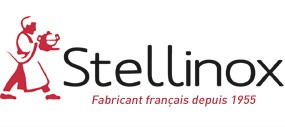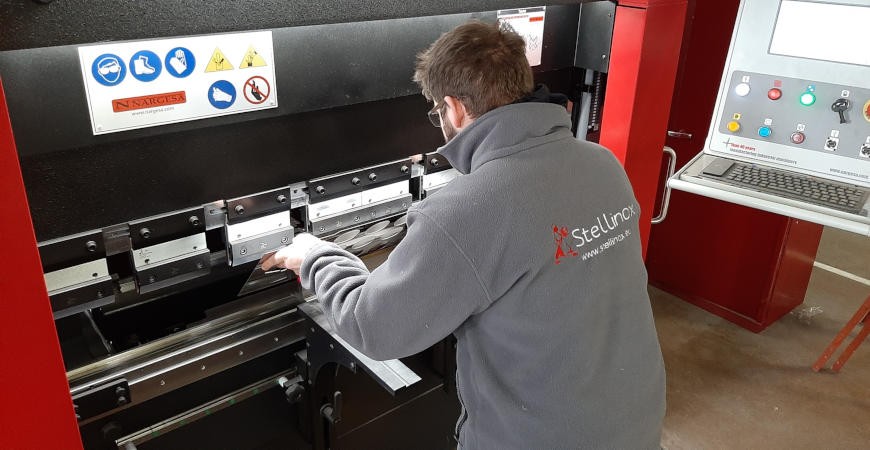The folding process
In sheet metal work, bending is an activity that combines power and precision. Unlike a sheet of paper which can be bent without deformation, metal is difficult to bend and will deform into a round shape. To avoid a "round" angle, the stainless-steel sheet must be constrained so that it does not deform and makes a nice bent angle. As with any controlled deformation of metal, this requires placing the sheet between a punching tool and a mould. It is therefore the variety of tooling that will allow the widest possible range of bends to produce customized items.
At Stellinox, we have a 40-ton CNC press brake.
Any sheet metal bending, even simple, requires the following parameters to be entered into the machine's computer: sheet thickness, distance from the bending line to the edge of the part, bending angle. In this way, the parameters for several successive bends can be entered and a more complex part can be produced with 3, 4 (or more) angles.
The precision and consistency of the bending is guaranteed by the power of the press and the combination of the stops with the tooling, which allows the realization of an angle to the nearest tenth of a degree. This means that we can produce series of several hundred pieces with the same quality. For our catering and restaurant customers, we are able to produce customized parts such as door protections, menu holders with laser-cut logos, salad bowl holders for a refrigerated counter with a salad bar, for example.
The parts that need to be bent are first laser-cut from a stainless-steel sheet with a thickness between 0.6 mm and 2 mm. A CAD file is used to design a part in the metal sheet, with precise measurements. The laser cutting is carried out before the bending.
Laser cutting
Fiber laser cutting is a recent industrial application of fiber optic technology that creates and transports the laser beam more accurately, consistently and economically.
Depending on the power of the laser source, the laser beam can cut metals of varying densities and thicknesses.
The cutting is assisted by an air pressure of 12.9 bar, which requires a dedicated compressor next to it.
The big advantage of fiber laser cutting is that it does not consume anything other than electricity. There is therefore no need to use gas cylinders as is the case with CO2 cutting or welding.
At Stellinox, we have a 1 kW fiber laser cutting machine, which can cut stainless steel up to 3.0 mm thick. The laser follows the digitized 2D drawing of the CAD file, which is set up on the machine's control screen. On an aluminum or stainless-steel part, the accuracy of the cut is about 0.2 mm. The minimum hole distance is about 1 mm. It is therefore possible to make micro perforations on a sheet of steel with a sheet thickness of 0.4mm.
The primary task of the laser cutting machine is to cut flat metal, on sheets or unrolling metal coils. The pressurized laser beam creates a vacuum around the point of impact on the sheet and can cause vibrations that will move the sheet. This is why it is necessary to work on the largest possible sheets, so that it remains perfectly still during cutting, for example sheets cut to 120 cm in length.
We therefore need all the expertise of the operator to optimize all the parts to be cut on the starting sheet. Afterwards, it is very complicated to rework a small part.
At Stellinox, we have modified our machine to be able to work on large parts and to process dishes that are already stamped. This operation replaces a conventional cutting press, which uses tooling.
For our catering and restaurant customers, we are able to make customized parts such as door protections, table rings, menu holders with logo cut-outs, salad bowl holders or stylized key rings for guest rooms.

